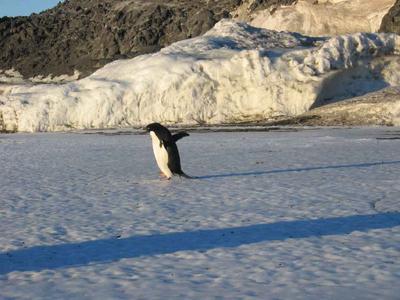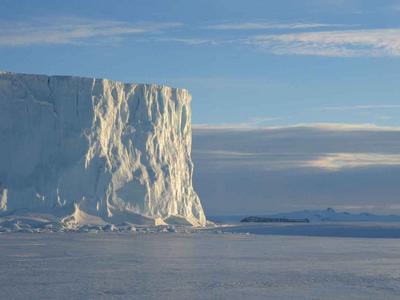9 November, 2003
With the first census complete, today was a day to catch up on
tagging and weighing. Mark and I headed off to North Base and Turk's
Head to tag the untagged pups and females that had been seen
yesterday. Darren and Kelly worked at the Big Razorback colony, near
camp, to continue Darren's weighing project. Gillian spent the day
entering our census figures into the database. Some of the field
computers had decided to quit working during the census, so she had
to enter all the hand-recorded data from the southern section of the
research area into another computer. This is why we write everything
down in a notebook and don't assume that all the information will be
easily recorded in those handy little computers. You just can't beat
a pencil and notebook in the field for data collection-no batteries,
no electronic glitches, and if it breaks or you run out of lead you
just pull out a new one. Oh yeah-they're cheap, too.
As we were wandering amongst the seals at Turk's Head, it was
impressive to see how big some of the pups were getting. A few were
in the water, shivering and swimming, while others were lounging
about in the sun with their mothers. At the same time, there were 3
brand-new pups, born to mothers who had been counted during
yesterday's census. The number of pups born each day has decreased
noticeably. Today we tagged only 3 new pups at Turk's Head and 2 at
North Base. There were a few pups born in the last 24 hours at Big
Razorback, as well. This is a contrast to the 15 to 20 new pups we
were finding each day at some of the larger colonies.
In the evening, Darren, Kelly, and I set off to check on some of our
non-seal neighbors. We headed out around 10 pm to Cape Royds to the
Adelie Penguin rookery to see what was new at the edge of the ice.
It was another beautiful evening, clear, mostly windless, and fairly
warm. Since this is a protected area, we did our penguin-viewing from
the ice and an adjacent rocky outcropping. There appeared to be more
penguins at the rookery than had been there the previous visit. The
males were busily engaged in nest building, collecting small pebbles
and bringing them back to their nest area. One male was most
industrious, collecting pebbles from the nest of another to bring
back to his site. It would be interesting to trace the movements of
some of those pebbles throughout the colony during a nesting season!
Cape Royds is now very much at the edge of the ice. When we climbed
up for a view we could see open water close by. It was kind of
startling to see all that water. It's been far too easy to forget
that we are spending our whole time in Antarctica living and working
with just 3 meters of ice separating us from the water. As the
spring progresses into summer it will be interesting to see just how
much closer the 'edge' becomes. In this case the phrase 'living on
the edge' could have a whole new meaning.
The days are warming up. Today's high temperatures were near 0C
(32F). Living in a place with 24 hours of sunshine (in between the
storms) means that thermal change comes quickly here as the sun
becomes higher in the sky. Our heavy down parkas are almost too warm
to wear once we get to the seal colonies. So now we've added another
item to the 'best-dressed' list of researcher attire-the uninsulated
red nylon wind jacket. On many days this week it was much more
comfortable to work in this wind-resistant layer than in a 5 lb down
parka. At this point, it's not the cold-it's the wind that we need
to avoid.
Daily Haiku:
Adelie Penguins
Trading rocks in rookeries
Watch them build their nests

One of the penguins left the rookery to check us out

The Adelie Penguin rookery--many of the penguins were actively relocating rocks from one nest site to another.

The Barnes Glacier at 1AM.

Getting a better view.
Contact the TEA in the field at
.
If you cannot connect through your browser, copy the
TEA's e-mail address in the "To:" line of
your favorite e-mail package.
|
